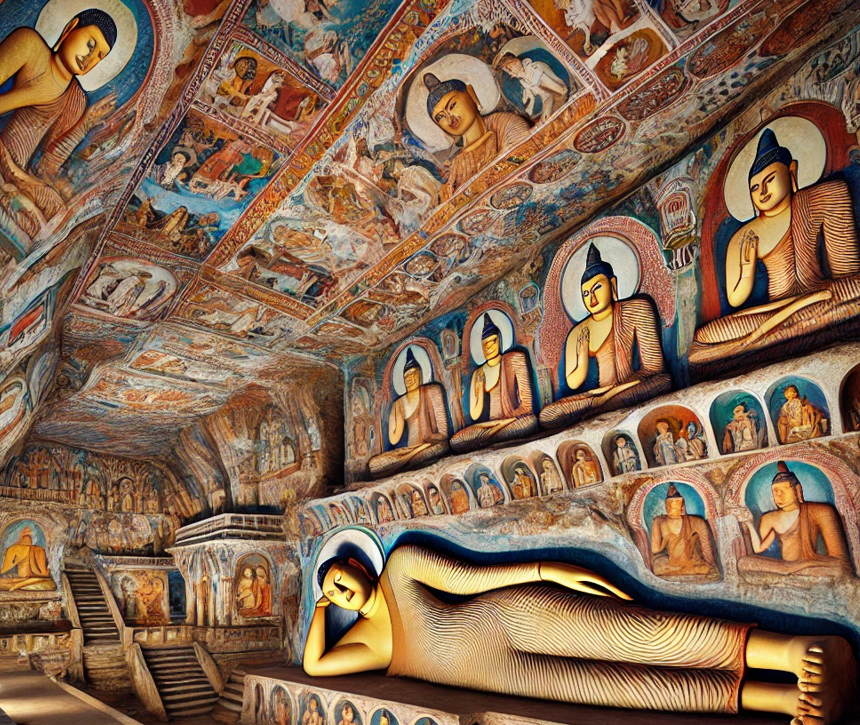Journey to Dambulla
After our exhilarating climb at Pidurangala Rock, we took a bus to Dambulla, eager to explore the famed Dambulla Cave Temple. The local transport was both affordable and comfortable, making it an ideal choice for our journey. Upon arriving in Dambulla, we embarked on a 2-kilometer walk to the temple, which is situated on a rock outcrop. The path leading up to the caves is steep and shaded, offering some respite from the sun.
Refreshing Delights on the Way
Given the hot and humid conditions, we decided to refresh ourselves with some local treats. We enjoyed some local berries with honey and salt, a delicious and energizing snack, and rose apple fruit found in a nearby forest. These natural delights were not only refreshing but also provided a much-needed boost for the climb ahead.
The Ascent to the Caves
The hike up to the Dambulla Cave Temple was a bit challenging, especially under the midday sun. We initially faced a steep ascent, and the sun beating down on us made the climb more strenuous. We made a brief stop to buy our entry tickets, which were located on the other side of the temple. After purchasing the tickets, we climbed back up, now benefiting from the shade provided by the surrounding trees. The shaded path made the return journey more pleasant.
The Dambulla Cave Temples
Upon entering the cave temples, we were greeted by an extraordinary sight. The Dambulla Cave Temple complex consists of five main caves, each filled with an array of Buddhist statues and vibrant frescoes. The walls and ceilings of the caves are adorned with colorful paintings depicting scenes from the life of Buddha and various saints. These intricate artworks date back to the 1st century BC and are considered some of the best-preserved examples of ancient Sri Lankan art.
The first cave, known as the “Cave of the Divine King,” features a large statue of the Buddha in a reclining position, surrounded by smaller figures of various deities. The second cave, the “Cave of the Great Kings,” includes statues of Buddha and several other important figures, all beautifully painted and detailed. Each cave offers a unique experience, with the statues and paintings conveying a sense of peace and reverence.
The Dambulla Cave Temple complex is also renowned for its historical significance. It was originally used as a monastery and later became a major pilgrimage site. The caves have been a place of worship and meditation for over two millennia, making them an important spiritual and cultural landmark.
Return to the City
After exploring the caves, we made our way back to the city, which involved a return walk of about a kilometer. We purchased some local snacks and essentials before catching a bus back to our stay. The heat and humidity had left us exhausted, so we opted to rest at our accommodation.
Evening Relaxation and Preparation for Kandy
In the evening, we ventured to the local market for tea and to pack our dinner. The heat of the day had taken its toll, and we were eager to relax and prepare for our next destination. We retired early to ensure we were well-rested for our journey to Kandy, our next city spot.
Conclusion
Our visit to the Dambulla Cave Temple was a captivating blend of history, art, and spirituality. The hike up to the caves, though challenging, was well worth the effort for the stunning views and the opportunity to experience one of Sri Lanka’s most revered religious sites. As we prepared to move on to Kandy, we carried with us the memories of the vibrant frescoes and the peaceful atmosphere of the caves, eager for the adventures that awaited us in our next destination.
